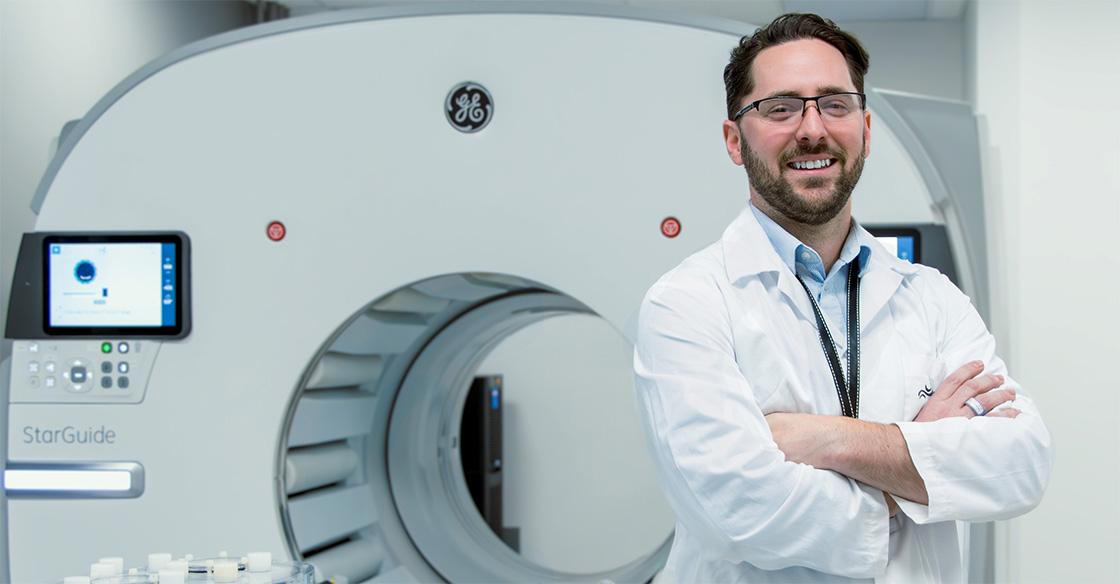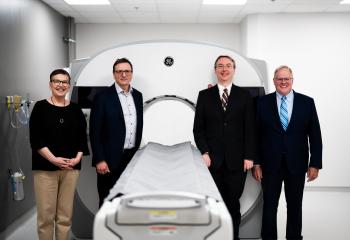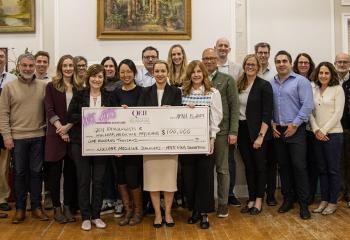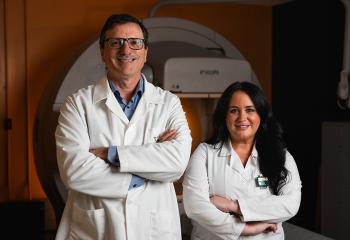
Pictured: Dr. Courtney Henry with the StarGuide SPECT/CT
As Dr. Courtney Henry examines a 3D model of lungs, moving the object around in his hands, it speaks to why he aspired to be a medical physicist.
“When I graduated from Dalhousie’s physics program, I knew I wanted to do something very hands on. Something you could touch and feel and appreciate in real-time. Something that would make a difference.”
And he’s found it as a nuclear medicine physicist at the QEII Health Sciences Centre. Joining the nuclear medicine department in March 2024, Dr. Henry’s arrival was just months before the QEII became home to Canada’s first StarGuide SPECT/CT nuclear medicine scanner. That timing was no coincidence.
The donor-supported technology is the biggest advancement in nuclear medicine in 20 years.
“As a nuclear medicine physicist, working with cutting-edge technology and the research opportunities that affords was a big draw for me to come to Nova Scotia Health,” he says. “I also wanted to be at a health centre like the QEII where I could see and feel the impact of my work.”
Acquiring the StarGuide is a prime example of how donors are playing a leadership role in helping to attract top medical talent to the QEII and introducing new, innovative technology. Key pillars of the We Are campaign.
The StarGuide’s unique design and superior imaging quality is changing the way physicians can diagnose and treat certain diseases like prostate cancer and heart disease, all while reducing scan times and waitlists to help more patients get their scans sooner. It also positions the QEII to lead novel clinical research.
And Dr. Henry’s work is at the forefront, specializing in the scientific and technical aspects of nuclear medicine. As the only nuclear medicine physicist in the Maritimes, and one of the few in Canada, he is focused on leveraging the features of the StarGuide to help physicians make more accurate and informed clinical decisions that impact a patient’s diagnosis and treatment.
“Having the StarGuide at the QEII opens up all kinds of possibilities,” he says.
One of those possibilities is the growing field of precision medicine in cancer care called theranostics. A two-pronged approach for the diagnosis and treatment of certain types of cancer, it uses special radioactive molecules, with one designed to seek out cancer cells in the body and the second delivering radiation directly to the cancer cells. The StarGuide then allows physicians to see how a tumour responds to specific treatments.
This will translate into life-changing care for some patients living with prostate cancer. As of February, a new treatment option is available at the QEII because of the StarGuide and the donor-funded gallium-68 DOTATATE. Together, the technology will allow physicians to target a specific cancer cell and monitor the state of the disease throughout the course of treatment to see the progress.
Dr. Henry says it’s a testament to the generosity of donors that the QEII was able to acquire the StarGuide.
“Leveraging donor support to provide cutting-edge technology really says something about the community that we live in. Being on the receiving end of that generosity, working with this technology is very humbling.”
The QEII Foundation is actively raising $3 million for the project, which is funding two best-in-class nuclear medicine scanners at the QEII; one of which has already arrived and is scanning patients, thanks to donor support so far. To learn more or donate, visit QE2Foundation.ca/nucmed


